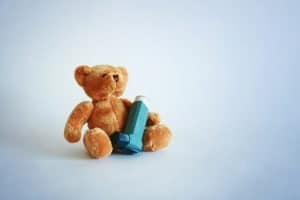Spring has sprung and with the change in seasons, so have seasonal allergies. This month in Retail Pharmacy Assistants e-magazine we take a look at how to prevent and manage allergies in children, and how pharmacy assistants can help worried parents provide their little legends with some relief.
Seasonal allergies, which in spring produce what is commonly called hay fever or seasonal allergic rhinitis, occur when “outdoor moulds release their spores, and trees, grasses and weeds release tiny pollen particles into the air to fertilise other plants”, according to Florida, US-based allergist Dr Jordan Smallwood in an article published on kidshealth.org.1
“The immune systems of people who are allergic to mould spores or pollen treat these particles (called allergens) as invaders and release chemicals, including histamine, into the bloodstream to defend against them,” he says. “It’s the release of these chemicals that causes allergy symptoms.1
“Even kids who have never had seasonal allergies … can develop them. Seasonal allergies can start at almost any age, though they usually develop by the time someone is 10 years old.1
Pharmacy assistant Emma Smallbone, from Wholelife Pharmacy & Healthfoods in Strathpine, Queensland, says that as many as 30% of children can be affected by seasonal allergies.
“Unfortunately, some kids experience [allergies] all year round,” she says, adding that while children “may grow out of allergies and asthma”, this is very individual and “will be different from one child to the next”.
Ms Smallbone says that looking at family history may give an indication if allergies and asthma are likely to hang around into adulthood or if it’s something a person will grow out of.
The common symptoms associated with seasonal allergy presentations in children include “sneezing, runny nose, itchy, swollen and irritate eyes”.
“They can also be affected orally with an itchy tongue, throat and palette,” says Ms Smallbone.
For parents worried that their child may have seasonal allergies, she suggests looking at “early signs” such as “constant rubbing of the eyes and nose”.
In terms of allergy management strategies, one of the first steps Ms Smallbone suggests is considering the weather and pollen level.
“Common Australian weather websites can give you a four-day outlook for allergies,” she says.
“They give an allergy risk between low, moderate and high, along with a wind forecast as well. This can be handy when you have a family member with severe allergies, and also reactive asthma.”
Ms Smallbone also recommends considering an investment in a “home air filter” to help manage allergies, as this device can “reduce and trap airborne allergens”.
“When experiencing flare-ups, it’s best to fully change your clothes [on returning home], have a shower and always wash your hair,” she says.
“Allergens often collect on our clothes, hair and eyebrows. The [water] stream can also give some welcome relief to an allergy outbreak.”
In terms of OTC products available in retail pharmacy that are designed to provide “fast and effective” relief from seasonal allergies, Ms Smallbone suggests “antihistamine tablets, oral liquids, eye drops and nasal sprays”, which “provide fast relief and are convenient”.
She cautions, however, that before starting children on OTC allergy relief products, pharmacy assistants should ensure parents speak with the pharmacist and/or consult with their GP.
To read the full feature as it appears in the September issue of Retail Pharmacy Assistants e-magazine, visit: rpassistants.com.au/magazines/retail-pharmacy-assistants-september-2021/
Reference:
- Smallwood JC. ‘Seasonal allergies (hay fever)’. org/en/parents/seasonal-allergies.html.






